Multiple Choice
Identify the letter of the choice that best
completes the statement or answers the question.
|
|
|
1
|
What is the first part of the digestive tract?
a | Cecum | c | Esophagus | b | Small intestine | d | Anus |
|
|
|
2
|
How long is the small intestine?
a | 4 feet | b | 12 feet | c | 29 feet | d | 70
feet |
|
|
|
3
|
How many quarts is the Large Colon?
a | 14 quarts | b | 29 quarts | c | 80 quarts | d | 28-32
quarts |
|
|
|
4
|
A Mares normal estrous cycle is____long?
a | 21-22 days | b | 20 days | c | 19 days | d | 23
days |
|
|
|
5
|
_______is the word used to describe the displacement of injury to the patella
and surrounding tissue?
a | Buck kneed | b | Heel malidy | c | Stifled | d | none are
correct |
|
|
|
6
|
Relating to horse reprodution the letters LH stand for...
a | listing heel | c | luteinizing hormone | b | latching hitch | d | lasting hormone |
|
|
|
7
|
The pole on a horse is located.
a | on the foot | b | on the belly | c | on the head | d | on the rump
|
|
|
|
8
|
The term of ossified lateral cartilidge is ....
a | ring boned | b | knock kneed | c | hot walker | d | sidebone |
|
|
|
9
|
A common name for strongyles is
a | Tapeworm | b | Bloodworm | c | Heartworm | d | Roundworm |
|
|
|
10
|
A female parent of a foal is properly called?
|
|
|
11
|
For mares milk production peaks____to____after foaling?
a | 5 days | b | 20 days | c | 4 to 8 weeks | d | 6 to 8 weeks
|
|
|
|
12
|
What is the largest component in mares milk?
a | sugar | b | solids | c | protein | d | fats |
|
|
|
13
|
The normal gestation period for a mare is ____days?
a | 336 days | b | 267 days | c | 876 days | d | 154 days
|
|
|
|
14
|
Symptons including the horse lying on its side, abdominal pain and kicking of
the abdomen are an indication of?
a | strongyles | b | heaves | c | colic | d | bots
|
|
|
|
15
|
A foul smell, blank discharge from the hoof and lameness are symptoms of?
a | foudner | b | azoturia | c | thrush | d | colic |
|
|
|
16
|
Stiffness is gate, muscle spasms, stiff neck; contracted jaw muscles and
eventual paralysis are symptoms of?
a | Anthrax | b | Strongyles | c | Colic | d | Tetanus |
|
|
|
17
|
The normal presentation of the foal during birth is?
a | front feet, heels down, followed by nose | b | front feet, heels up,
followed by nose | c | nose followed by front feet, heels up | d | nose followed by front feet, heels
up |
|
|
|
18
|
Generally speaking it is best to first breed a filly at
a | 5 years of age | c | 2 years of age | b | 3 years of age | d | 4 years of age |
|
|
|
19
|
Fillies generally start coming in to heat when they are
a | 12-15 months of age | c | 16-18 months of age | b | 8-10 months of age | d | 20-24 months of
age |
|
|
|
20
|
The energy needs of a horse are best met by feeding
a | Carbohydrates | b | Fiber | c | Vitamins | d | Urea |
|
|
|
21
|
Soybean meal is the most widely used protein supplement in the Untied States. It
usually is ___ protein.
a | 44 perent | b | 20 percent | c | 35 percent | d | 55
percent |
|
|
|
22
|
The grain is suggested as the best grain to be added to horse ration is
a | grain sorghum | b | corn | c | oats | d | barley |
|
|
|
23
|
Periodic ophthalmia or motion blindness is cause by a deficiency of
a | calcium | b | thiamine | c | riboflavin | d | protein |
|
|
|
24
|
Fats have___ as much energy per pound as do carbohydrates.
a | 4 times | b | 3.5 times | c | 2.25 times | d | 1.5
times |
|
|
|
25
|
________is the term used when filing the sharp edges off of horse’s
teeth.
a | laceration | b | floating | c | wood chewing | d | wolf
teething |
|
|
|
26
|
The height of a horse is measured in hands. A hand is equal to?
a | 1 inch | b | 12 inches | c | 5 inches | d | 4 inches
|
|
|
|
27
|
What is the scientific name for the egg of he female reproduction cell?
a | spermatozoa | b | avium | c | scilintia aviva | d | ovum
|
|
|
|
28
|
When is the most critical feeding period of the horse’s entire
life?
a | at birth | b | during weaning | c | after an injury | d | during
training |
|
|
|
29
|
Give the name of te infectious diesease where abscesses develop under the lower
jaw along the neck or anywhereon the body?
a | equine influenza | c | strangles | b | tetanus | d | naviculare disease
|
|
|
|
30
|
A horse is a horse when it stands.....
a | at least 13 hands | c | at least 14.2 hands | b | at least 14 hands | d | at least 14.3 hands
|
|
|
|
31
|
In the images above, indicate which one best represents a horse’s mouth at
1 year (pic)
|
|
|
32
|
In the images above which picture best describes the mouth of a 3 year old
horse?(pic)
|
|
|
33
|
In the picture above which horse best represents the mouth of a 4 year old
horse?(pic)
|
|
|
34
|
In the diagram below, identify #26. 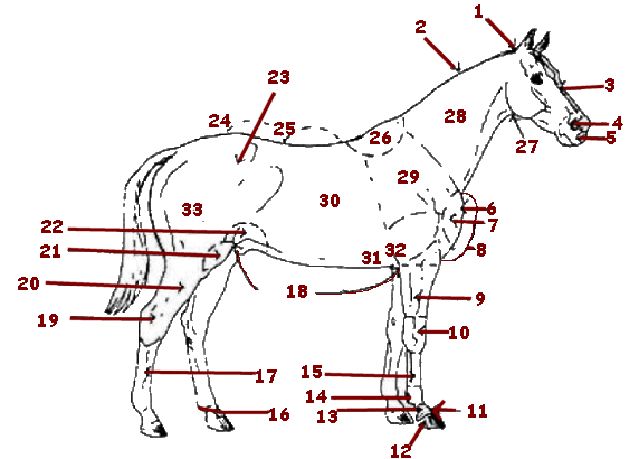
|
|
|
35
|
In the diagram below, identify #22. 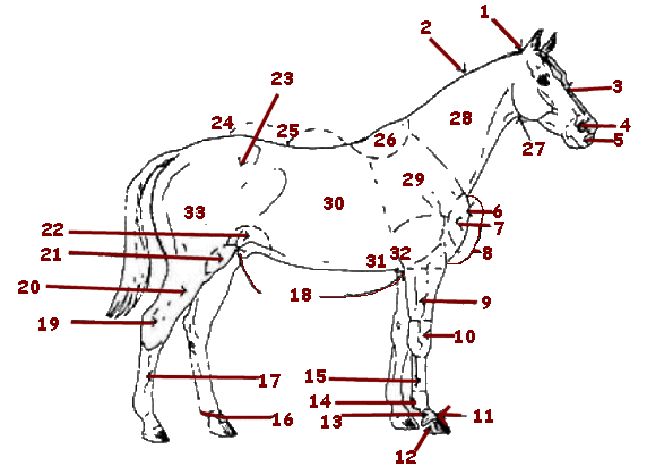 a | stifle | b | crest | c | flank | d | point of hip |
|
|
|
36
|
In the diagram below, identify #16.  a | fetlock | b | ergot | c | ankle | d | pastern |
|
|
|
37
|
In the diagram below, identify #2. 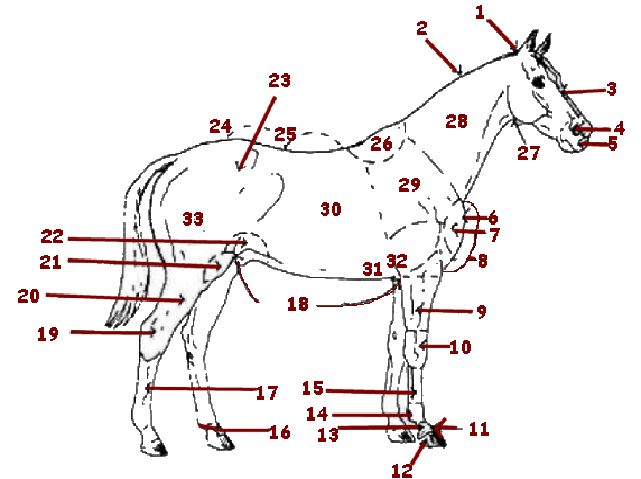
|
|
|
38
|
In the diagram below, identify #30. 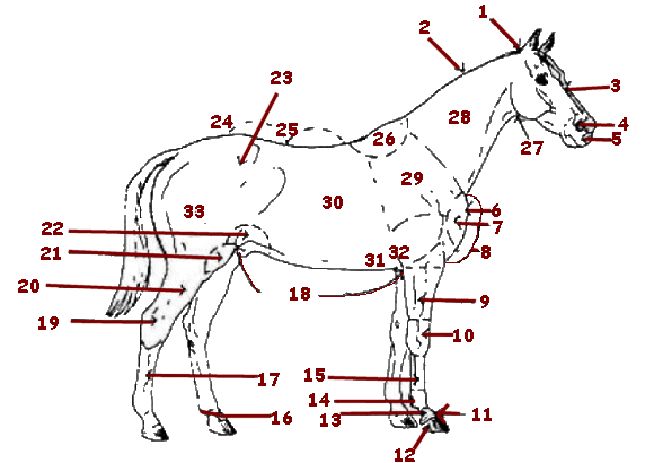 a | barrel area | b | back | c | abdomen | d | hoof |
|
|
|
39
|
In the diagram below, identify #21 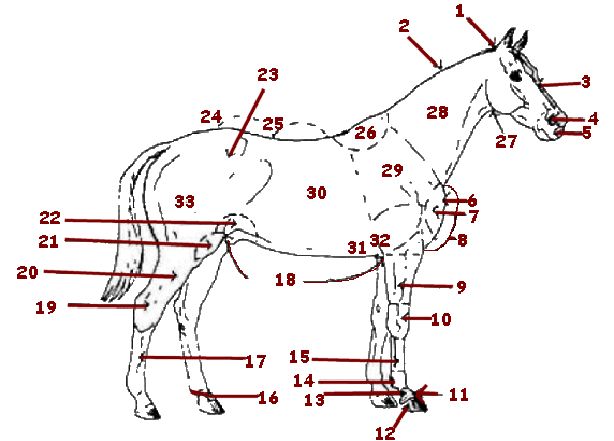 a | withers | b | frog | c | barrel area | d | stifle |
|
|
|
40
|
_________ is the name of the shoe worn by a draft horse.
a | Scotch-bottom | c | Queens plate | b | Block healed | d | Heel clips |
|
|
|
41
|
__________ turbinate bones are found in each nostril of a horse?
|
|
|
42
|
In the diagram below, identify #9. 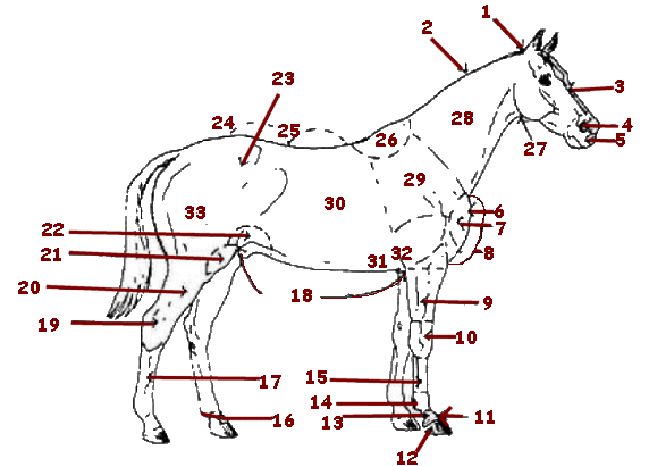 a | knee | b | coronet | c | forearm | d | stifle |
|
|
|
43
|
In the diagram below, identify #17. 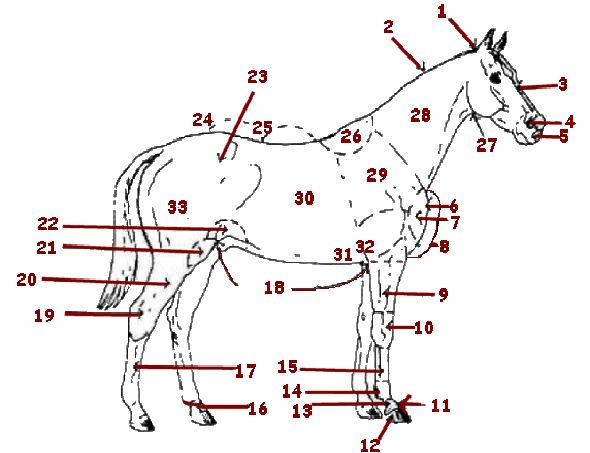 a | fetlock | b | cannon | c | forearm | d | pastern |
|
|
|
44
|
Using the image below, what is the approximate age of this horse? 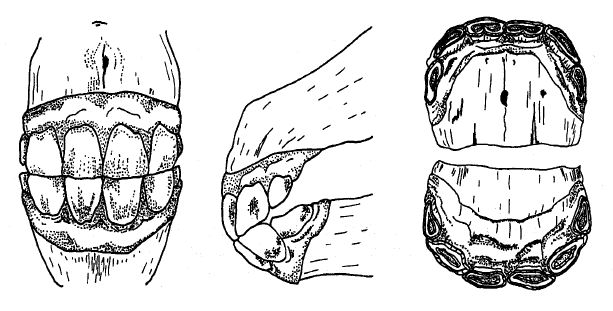 a | 1-year old | b | 2-years old | c | 3-years old | d | 4-years
old |
|
|
|
45
|
Using the image below, what is the approximate age of this horse? 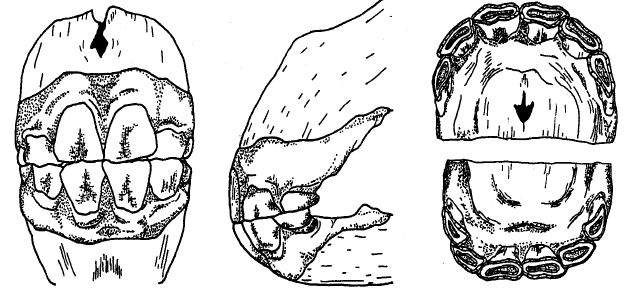 a | 1-year old | c | 3-years old | b | 2-years old | d | 4-years old |
|